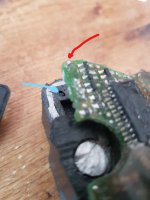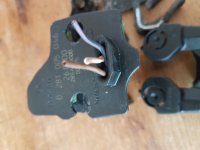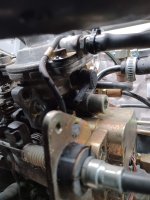Good morning! I have found what might be the solution to an immobiliser problem on my year 2000 Ducato- based motorhome.
Can’t see any other posts on this subject since 2012.
A long shot- but does anyone know of a person/ firm in the North if England able to do this work? Thanks.
Here’s what forum member AARK said in 2012:”Have done a lot of early 2.8s. If your system is the same, it can be bypassed, but requires some mechanical ability and dexterity. The Keycode Unit by the steering column talks to the fuel solenoid on the injection pump. This solenoid sticks out of the pump towards to starter motor, ie mounted horizontal, east/west. Remove any pipes, hosing, etc. in the way, eg intercooler hoses. Remove the 3 pin plug, the solenoid is secured with 2 tamper proof torx or hex screws (sorry been a few years since I did one). Once these are removed the electronic section of the solenoid can be removed, leaving a standard fuel solenoid. The 3 pin loom plug has wires from ignition, earth and KCU. Located the ign wire (live with key on), connect this to the fuel solenoid. The KCU box under the dash can be disconnected. Note: vehicle security has now been compromised, the van can now be started without a coded key”
Can’t see any other posts on this subject since 2012.
A long shot- but does anyone know of a person/ firm in the North if England able to do this work? Thanks.
Here’s what forum member AARK said in 2012:”Have done a lot of early 2.8s. If your system is the same, it can be bypassed, but requires some mechanical ability and dexterity. The Keycode Unit by the steering column talks to the fuel solenoid on the injection pump. This solenoid sticks out of the pump towards to starter motor, ie mounted horizontal, east/west. Remove any pipes, hosing, etc. in the way, eg intercooler hoses. Remove the 3 pin plug, the solenoid is secured with 2 tamper proof torx or hex screws (sorry been a few years since I did one). Once these are removed the electronic section of the solenoid can be removed, leaving a standard fuel solenoid. The 3 pin loom plug has wires from ignition, earth and KCU. Located the ign wire (live with key on), connect this to the fuel solenoid. The KCU box under the dash can be disconnected. Note: vehicle security has now been compromised, the van can now be started without a coded key”









